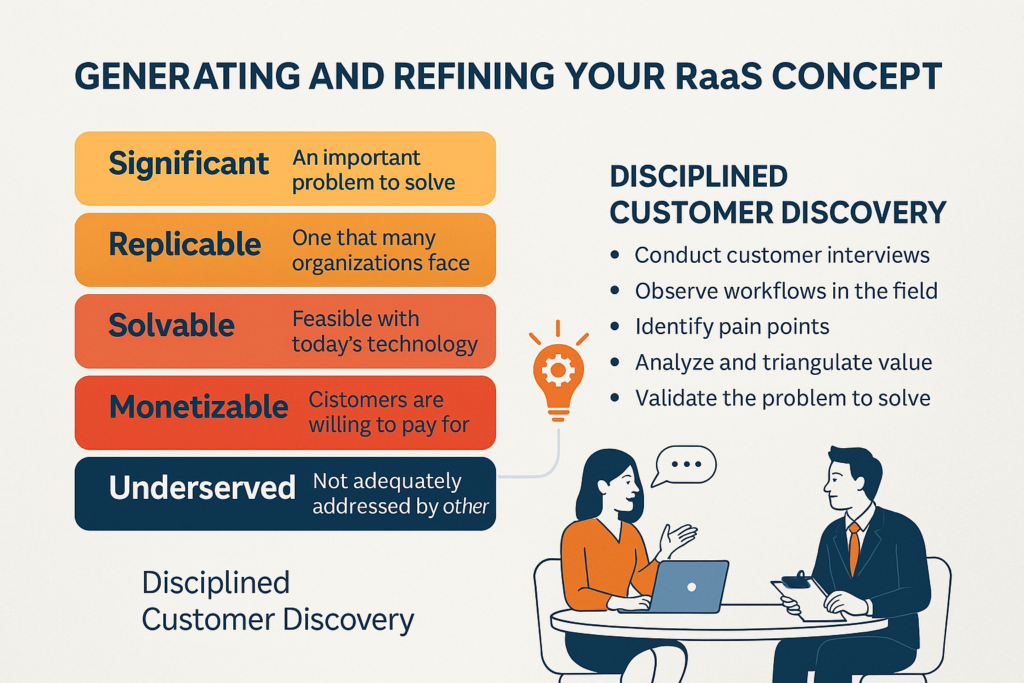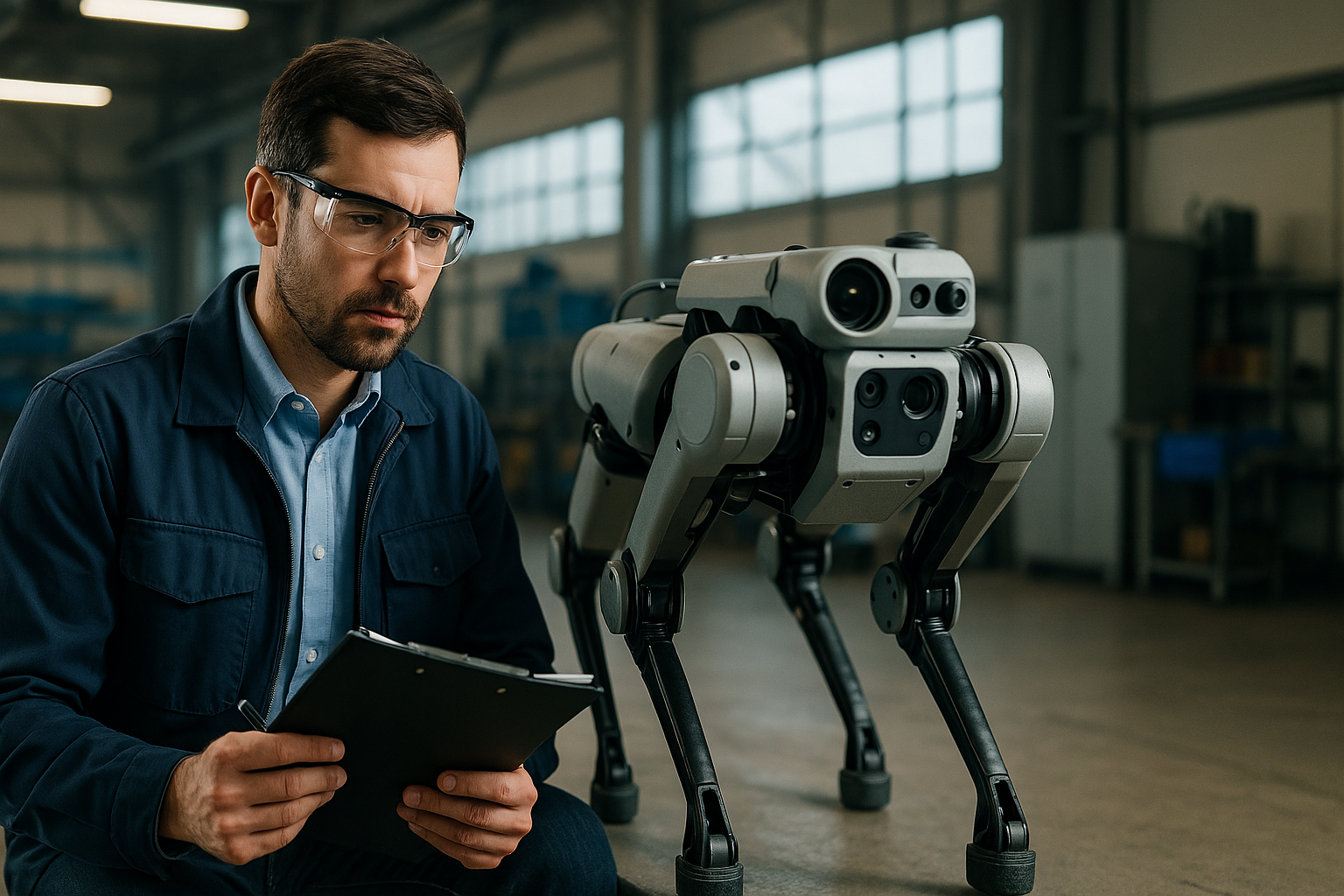In the world of robotics, everything begins with a powerful insight: the problem you choose to solve is the cornerstone of your entire venture. Yet too many startups fall into the trap of leading with technology rather than customer needs. Seduced by the promise of their innovations, they chase ideas without a clear understanding of the market’s pain points. The result? Solutions in search of a problem—a costly detour that often ends in failure.
The foundation of a successful robotics venture is not technology, but discovery. It starts with finding a problem that is urgent, widespread, solvable, monetizable, and underserved. These five criteria form the gold standard for opportunity validation:
- Significant: The problem must matter deeply to your customer. Think existential threats to operations, not minor annoyances.
- Replicable: A one-off pain point won’t scale. Seek problems shared across organizations or industries.
- Solvable: It should be realistically addressable using today’s technologies and reasonable development efforts.
- Monetizable: Solving the problem should unlock tangible value for customers—enough that they’ll pay for your solution.
- Underserved: If current solutions are clunky, outdated, or missing altogether, there’s room for disruption.

Real-world stories reveal how successful Robotics-as-a-Service startups struck gold.
Energy Robotics didn’t just build robots; they validated a clear industrial need through the high-stakes ARGOS Challenge. This competition, backed by TotalEnergies and the French government, aimed to surface robotic solutions for hazardous environments in the oil and gas industry. Energy Robotics’ team, stemming from the renowned research group Team Hector, rose to the challenge with an autonomous inspection solution. By winning the challenge, they not only proved their technical capabilities but also validated a direct industrial need backed by real customers with high stakes and immediate urgency.
Kiva Systems originated from the hard lessons learned at Webvan, where co-founder Mick Mountz experienced firsthand how inefficient warehouse operations could cripple a business. This insider view exposed the acute need for automation in logistics. Mountz took that insight and validated it across multiple fast-growing e-commerce operations. Kiva’s robotic system addressed a systemic industry pain point: the inefficiencies in order fulfillment that were becoming a barrier to growth for online retailers.
Dexory (formerly BotsAndUs) started with a vision for service robots in retail and hospitality, piloting systems in high-profile locations like Heathrow Airport. But as use cases evaporated post-pandemic, they engaged deeply with clients and uncovered a recurring logistical nightmare at Heathrow’s cargo facilities: misplaced and delayed shipments. These issues were not only frequent but incredibly costly. Leveraging its core tech, Dexory pivoted to inventory tracking and automation for cargo and logistics. This move aligned perfectly with an underserved and urgent industry need, opening the door to scalable growth opportunities.
These cases teach us that great ideas often don’t come from brainstorming in a vacuum. They come from direct exposure to the customer’s world. The best way to uncover high-value problems is through disciplined customer discovery and immersive observation.
Customer Interviews: Go Beyond the Surface
Customer conversations aren’t about pitching your idea. They’re about listening. The goal is to uncover latent needs, frustrations, and patterns that reveal a deeper story.
Best practices for effective interviews include:
- Start with a learning goal or hypothesis.
- Involve a range of stakeholders, not just decision-makers.
- Ask open-ended questions, not leading ones.
- Practice active listening and use silence strategically.
- Dig deeper by asking “why” multiple times.
- Stay focused on the customer’s experience, not your product.
- Record and review insights, including emotional cues.
- Look for recurring themes that suggest systemic problems.
Firsthand Observations: Validate What They Do, Not Just What They Say
Complement interviews with observational research. Watching customers in their natural environment often uncovers gaps they don’t articulate.
Observation tips:
- Visit sites and observe real workflows.
- Pay attention to how and why things are done.
- Engage casually with frontline staff.
- Document everything: photos, videos, notes.
- Identify friction points: bottlenecks, errors, and frustration.
- Verify your interpretations with those on the ground.
Triangulating insights from both interviews and observations gives you a powerful lens to validate whether a problem is worth solving. If you can align what people say, what they do, and where they struggle, you’re close to finding your golden opportunity.
Ultimately, this process is about more than validation. It’s about vision. A well-defined problem doesn’t just set the direction for product development—it shapes your entire business. It clarifies your value proposition, guides your go-to-market strategy, and determines how investors will evaluate your venture.
Don’t build your robotics startup around a robot. Build it around a problem so compelling that a robot becomes the obvious solution.
📬 Want more founder-focused insights like this? Join the Robotics Innovators Hub newsletter and get practical advice, case studies, and tools to help your robotics startup thrive.

